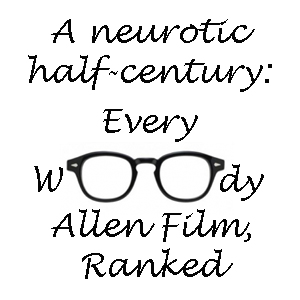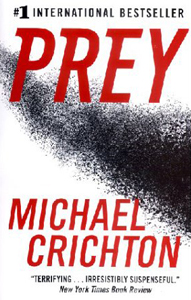In “Jurassic Park” (1990), Michael Crichton shows that bringing back dinosaurs is a scary proposition. But how hard is that? Dinosaurs were already scary. “Prey” (2002) is arguably more of a horror-thriller accomplishment, because he makes particles that can only be seen with a microscope into the plausible engineers of humanity’s end.
Artificial life finds a way
A corporate lab in Nevada develops a self-learning computer program patterned after the behavior of creatures in the wild. In developing a nanobot spy camera that will disperse and reassemble when confronted by missiles, the technicians combine the bots with a growth medium.
As Ian Malcolm would point out, artificial life finds a way.

“Prey” (2002)
Author: Michael Crichton
Genres: Science fiction, technothriller
Settings: California and Nevada, 2002
For example, individual African termites are dumb, as the author notes on page 274 of the hardcover. But a society of these termites creates structures as complex as humanity’s, on its own scale. They do this without central planning and without instructions encoded in their DNA.
As Crichton does in all his best works, he intersperses the thrilling story with tidbits that make it plausible – and eventually probable. We can say “Well, it’s unlikely that nanobot swarms would become killers.” But we can only say that if we ignore science.
Family man hero
On the character front, Everyman Jack is our first-person narrator. The first chunk of “Prey” is like “Disclosure” (1994). Jack thinks wife Julia is acting bizarre, but he doesn’t want to confront her about marriage counseling in case he’s wrong. Besides, he’s busy as a stay-at-home dad to three kids.
Also like “Disclosure,” the author shows us how a person’s corporate career can collapse based on innuendo rather than facts. But what’s especially valuable here is that we like Jack; his problems are down-to-earth – at first.
Later, when Jack – desperate for a job – joins the Nevada facility, he’s suspicious of boss Ricky. So Jack’s notion that he’s being messed with creates a foreboding mood. But we’re with him all the way.
Deadly trio of sciences
Crichton writes the mystery of the nanobot swarms’ behavior in the Nevada desert with excellent clarity. He smoothly combines three fields the average reader isn’t deeply familiar with: genetic engineering, nanotechnology and distributed intelligence.
In showing how the combination of these three disciplines plays out in terms of evolution, Crichton dismantles misconceptions. Among his tidbits is the fast speed at which evolution can occur (as it does in “Prey”).
On a large scale, sure, evolution is slow. But on a smaller scale, we have things like the African rainforest, where species rise and fall daily.
“Prey” gets a little long in the tooth during a couple of climactic action sequences. The solution to Julia’s and Ricky’s behavior is broadly what you expect, but still decently creepy.

Pray for a movie
Crichton’s descriptions of the swarms’ behavior would make for great movie scenes, with a creepy score behind it.
After the 2003 “Timeline” adaptation, disliked by Crichton along with most viewers, the author (and later his estate) hasn’t sold any rights to his books except for “Dragon Teeth” going to Steven Spielberg.
If that policy changes, “Prey” could still make a great movie. It’s set in the immediate future of 2002 but would play just as well in the immediate future of now. But let’s hope if the CGI artists use self-learning programming, they keep it in the computer.

